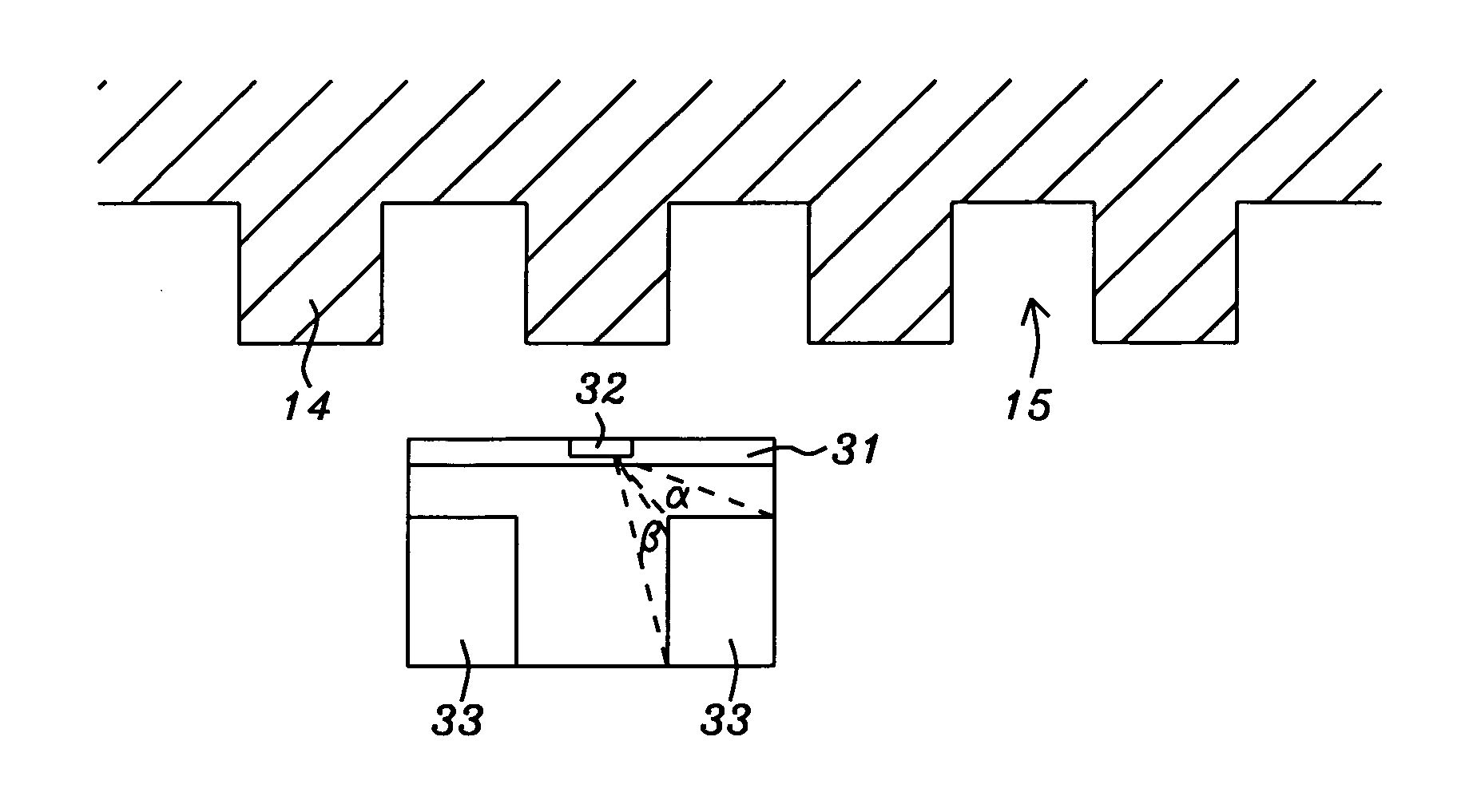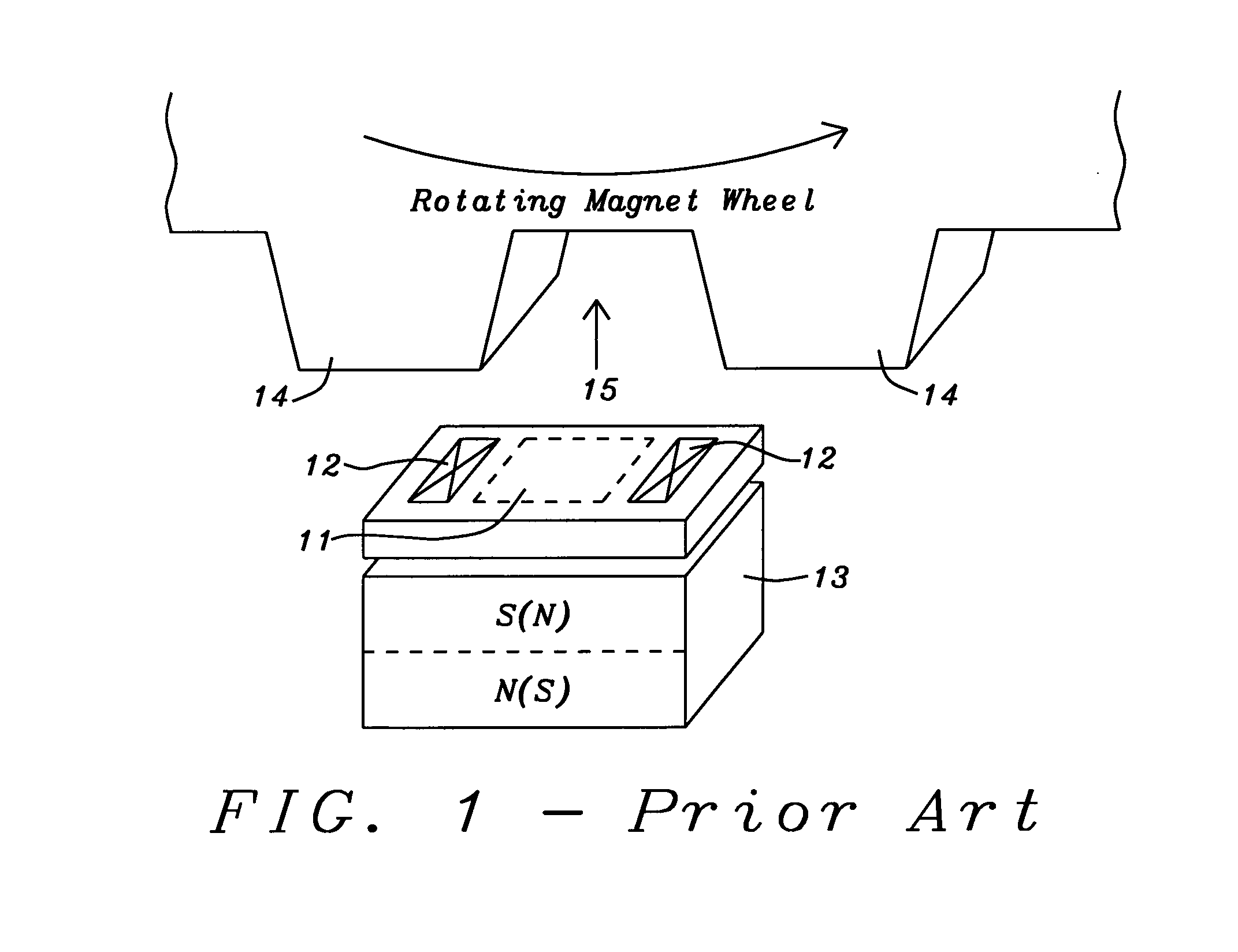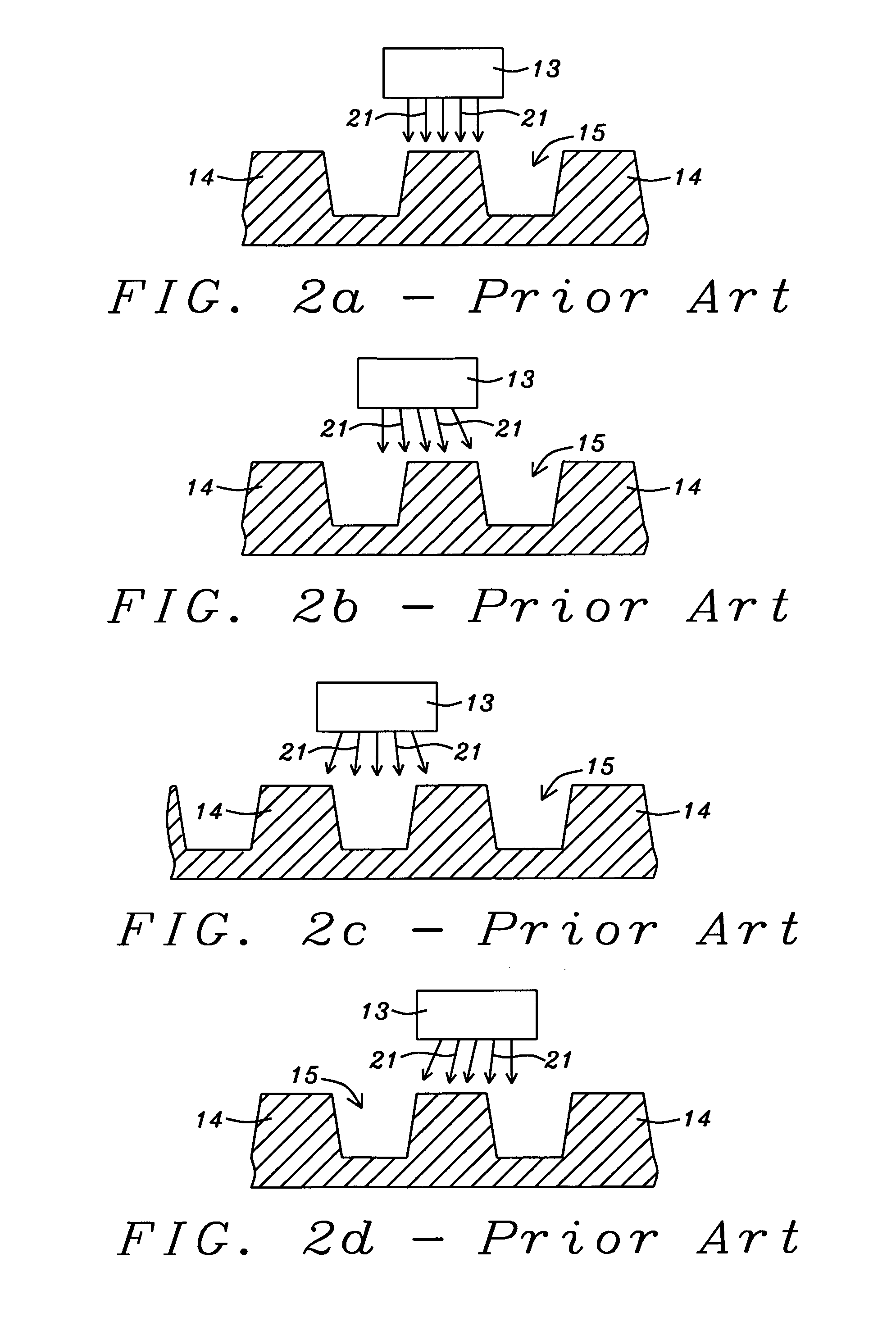Gear tooth sensor with single magnetoresistive bridge
a technology of magnetoresistive bridge and tooth sensor, which is applied in the field of toothed wheels, can solve the problems of large offset field in the gmr film plane, initial formation of the same wafer, and possible degradation, and achieves low cost, low cost, and high signal output
- Summary
- Abstract
- Description
- Claims
- Application Information
AI Technical Summary
Benefits of technology
Problems solved by technology
Method used
Image
Examples
first embodiment
[0030]the invention is illustrated in FIG. 5. Seen there is Wheatstone bridge 56 which comprises four identical MR elements (stripes), 51, 52, 53 and 54. A constant voltage is applied across both branches (51, 52) and (53, 54). Output voltage Vout1 is taken from the mid-point of the first branch (51,52) and output voltage Vout2 is taken from the mid-point of the second branch (53, 54). Each MR element has the same uniaxial anisotropy along its longitudinal direction, while the pinned magnetization (PM) within the MR is perpendicular to its longitudinal direction. Also shown is arrow 57 which represents the gear field.
[0031]A key feature of a first embodiment of the invention is magnetic shield 55 which comprises a layer of soft ferromagnetic material located either underneath or above elements 51 and 54 alone. The presence of the shield means that opposite arms of the bridge are immersed in different magnetic environments. When the invention is in use, as the toothed wheel rotates, ...
second embodiment
[0032]In FIG. 6 we illustrate the invention. Shown there is MR bridge 66 and single turn coil 67. The MR Wheatstone bridge consists of four identical MR elements (stripes), 61, 62, 63 and 64. A constant voltage is applied across both branches (61, 62) and (63, 64). Output voltage Vout1 is from the mid-point of the first branch (61, 62) and output voltage Vout2 is from the mid-point of the second branch (63, 64). Each MR element has the same uniaxial anisotropy along its longitudinal direction, while the pinned magnetization (PM) within the MR is also along its longitudinal direction.
[0033]Coil 67, made of a highly conductive material, is located underneath or above all elements and generates magnetic fields at 61 and 64 along their first longitudinal direction, as well as magnetic fields at 62 and 63 along their second longitudinal direction (antiparallel to the field direction seen by elements 61 and 64). Thus, as in the first embodiment, MR sensors 61 and 64 see different magnetic...
PUM
 Login to View More
Login to View More Abstract
Description
Claims
Application Information
 Login to View More
Login to View More - R&D
- Intellectual Property
- Life Sciences
- Materials
- Tech Scout
- Unparalleled Data Quality
- Higher Quality Content
- 60% Fewer Hallucinations
Browse by: Latest US Patents, China's latest patents, Technical Efficacy Thesaurus, Application Domain, Technology Topic, Popular Technical Reports.
© 2025 PatSnap. All rights reserved.Legal|Privacy policy|Modern Slavery Act Transparency Statement|Sitemap|About US| Contact US: help@patsnap.com



